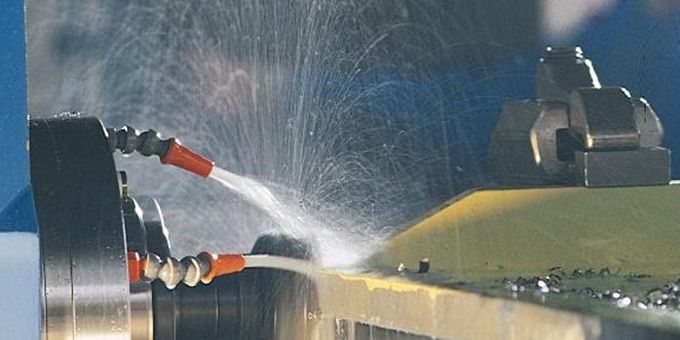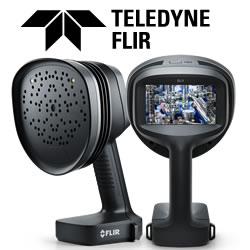This article discusses new technology features within the CNC, the HMI (Human Machine Interface) and making the process easier to manage, as well as how that relates to the machine motion control and specifically for multi-axis applications.
 Smart Manufacturing Control
Smart Manufacturing Control

Gisbert Ledvon, Business Development Director | HEIDENHAIN TNC
The manufacturing process of today involves many challenges from mass production down to lot size one. The CNC controls in factories must master this market trend specifically without an adequate amount of skilled labor in the US manufacturing world. In essence, manufacturing is facing a Renaissance in the CNC control technology shift.
On one hand, many of the current CNCs used in factories are controlling machines with 3-axis motion or maybe 3+1 and relying on a CAM program to provide the right machine code (e.g., G-codes) to drive these machines. An operator just pushes the green button to start a program. When one operation is done, he stops the machine, repositions the part (or a cobot) and pushes the green button again to start the next machining program. This type of operation bears a few risks.
The next generation of professional manufacturing machine operations will not be willing to just push a button. Many machine operators want to have feel empowered to make a quality part. At the same time, advanced 5-axis machine CNC controls have arrived and many of today’s operators expect that the part they see on the touchscreen comes off the machine at the exact size as the print or that the 3D model calls for. They do not want to rework or re-cut like some of the more experience machinists are used to. And quite frankly, that is how it should be if factory owners want to maximize the machine utilization and productivity output. In order to achieve this, the modern machine motion system has to be much more sophisticated than a simple 3-axis CNC with encoders on ball screws.
Improved Speed on the Factory Floor
Today’s new 5-axis machine controls offers so much more on the factory floor. For example, the latest HEIDENHAIN TNC 640 (smarTNC) mill turn CNC control comes with a 24” multi touch screen and allows the operator to import CAM files in IGES or DXF formats right into the CNC. This enables users to interactively create and simulate the machining process right on a virtual machine with high resolution graphics. The system gives the operator the confidence that the part will be perfectly cut without a collision of the spindle or fixture of the machine setup quicker and more easily than ever before.
These new TNC controls offer accessibility from the operator panel on the machine right to the Server System. Options now possible for the control users includes the ability of the operator to view setup sheets, workflow information and even run the CAM-system right from the machine, as well as update programs, create new tool paths and transfer data right into the CNC. In the age of mass customization, priorities and workflow change constantly so the smart CNC needs to be able to adjust quickly and reliably.
Another important function now available for use on the factory floor and speeding up the process is the ability to reprioritize manufacturing jobs automatically. HEIDENHAIN’s TNC 640 control for example offers Batch Processor to do this.
.jpg)
The control is programmed to determine if all the necessary machining programs and tools are available to complete the next job, and if so, does so. It even determines if the remaining tool life is adequate to machine the next job where the tool will be used. The TNC can accurately determine how long it will actually take to machine a particular job because it has the actual machine motion or kinematics stored in the CNC. This enables the operator or programmer to accurately calculate the machining time based on machine behavior and axis motion speed hence optimizing machine utilization time and maximizing profits.
To ensure that parts are setup correctly on a machine tool, a new feature similar to face recognition found on some newer smartphones is now also in use on some manufacturing factory floors. It’s a visual setup system simply called VSC (Visual Setup Control) from HEIDENHAIN.
.jpg)
To explain, think for moment of an operator at a 5-axis machining center connected to a robot or parts changer. The operator loads a pallet with the qualified part setup into the machine. In the machining center is a VSC system installed that will take a high-resolution image of the “perfect set up” and store it into the TNC. Now when the operator starts the automaton process to load the next part into the machine, the VSC system will take another picture of that part, compare it to the stored image in the TNC and determine if the setup is correct. If so, the machining process can begin. But if there is a problem such as if someone left a wrench on the fixture or a feature like a bore is missing, the TNC will then trigger an error message and either stop the machine or load the next part, repeating the process. When an “all clear” is received, the part will be machined.
Improved Accuracy on the Factory Floor
Now let’s move from speed to accuracy, as in most cases, it is a trade-off between the two during machining. This is no longer so with advanced CNC functions.
The HEIDENHAIN TNC for example offers ADP/Cycle32 functionality which allows a programmer to achieve both speed accuracy. To do so, the user can define a tolerance band for the machine movement allowing it to move as fast as possible around corners and critical features without radical speed changes. Radical speed changes are a problem as they generally leave marks on fine surface finishes and risk final part accuracy. Picture a racetrack with many curves. The race car driver wants to optimize the path he takes around the corners to be as close as possible to the curb and not lose speed but not go too far over the curb with the tires to get penalized by the officials. ADP/Cycle 32 compensates and controls for that on a machine tool.
When taken one step further, if the operator wishes to machine a part beyond the accuracy provided by the cutting tool shape (e.g., a bull nose radius tolerance), smart controls offer features to now handle that. HEIDENHAIN’s TNC offers 3D-ToolComp together with a touch probe measuring cycle 444 as a powerful feature that ensures maximum part accuracy specifically on freeform surfaces.
Other important considerations now in place in today’s advanced machine controls to ensure maximum part accuracy and superior surface finishes include the use of sealed linear glass scales and high dynamic motion systems which are critical specifically in simultaneous 5-axis applications. This allows users to take advantage of some new and unique features including with the TNC and its dynamic efficiency function. This feature is specifically advantageous if parts are machined without knowing how much stock material is really being removed. Let’s take for example 3D-printed parts or castings. A 3D model in a CAM system “assumes” how much engagement of the cutting tool in the material is happening, and that determines the speeds and feeds are written into the CNC program. The TNC control has the capability with AFC (Adaptive Feed Control to automatically adjust the optimum feed rate based on spindle load, optimizing material removal rate as well as extending the cutting tool life. This maximizes process reliability and efficiency even when cutting unknown material thicknesses and the operator is not at the machine.
.jpg)
Connected Machining on the Factory Floor
Today’s smart controls can now often be connected to a company’s network allowing programmers and operators to communicate without paper and share files or other documents between the machining center and the office team. This encourages smoother and more efficient work than before possible.
.jpg)
In addition, a powerful monitoring system like HEIDENHAIN’s StateMonitor can be connected either via DNC, MTConnect Modbus or OPCUA protocols. This plug-and-play solution offers instant analytics about machine performance and operation efficiency. The communication feature Messenger will e-mail at predefined times/dates the specific machine messages to the person with the right skillset (e.g., preventive maintenance staff) who then can take actions to ensure maximum machine utilization. All this can be viewed and operated not only on the local network but also on mobile devises like smart phones or tablets.
.jpg)
In summary, today’s advanced smart CNC controls allow manufactures to optimize the manufacturing process right on the factory floor like never before. At the same time, monitoring software provides valuable data and alerts to identify predictive maintenance or other error messages in real time allowing operator or managers to maximize the ROI of the modern machine tool in a large production down to small lot size applications.
The content & opinions in this article are the author’s and do not necessarily represent the views of ManufacturingTomorrow
Featured Product

